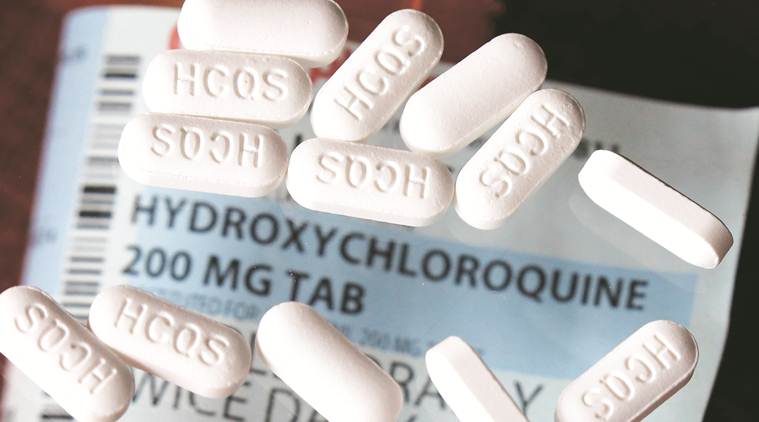 Companies producing hydroxychloroquine said it was possible to meet the demand. (AP)
Companies producing hydroxychloroquine said it was possible to meet the demand. (AP)
India’s decision to reverse the April 4 export ban on hydroxychloroquine within 74 hours is based on an assessment that pharma companies Ipca Laboratories and Zydus Cadia can ramp up capacity to cater to the increased domestic as well as overseas demand.
On Tuesday, India said it would license hydroxychloroquine, primarily an anti-malarial drug also used for auto-immune diseases, and pain-killer paracetamol, allowing their export to some countries. The demand for hydroxychloroquine had shot up globally with several countries pushing India — among the top suppliers of the drug globally — for the drug’s use in their fight against COVID-19.
While the demand position of these drugs would be “continuously monitored”, the Ministry of External Affairs Tuesday said the stock position could allow Indian companies to meet the export commitments already made. Companies producing the drug said it was possible to meet the demand.
Ipca Laboratories and Zydus Cadila are ramping up production capacity to not just meet an immediate demand from the US, EU and other countries for around 150 million tablets, but also to cater to an order for around 100 million tablets from the Indian government in the wake of the COVID-19 emergency.
A spokesperson for Zydus Cadila said the company has, at the moment, ramped up production of its hydroxychloroquine to 20-30 metric tonnes a month from three tonnes previously to meet the higher requirement. It will scale up the capacity further to about 40-50 metric tonnes per month “if need arises”. The spokesperson, however, did not specify the split in capacity for India and exports.
Ajit Kumar Jain, Joint Managing Director, Ipca Laboratories, another major producer of the drug, told The Indian Express, “We manufacture not only all the APIs (active pharmaceutical ingredients), but all the KSMs (key starting materials) for it as well. We are self sufficient that way.”
“Suddenly, the demand has gone up 4-5 times, but the industry’s capacity is very large. In April itself, we will be able to meet whatever the government has ordered, which is significant compared to the quantity we were producing for India,” he said.
The company has the capacity to manufacture hydroxychloroquine using 20 metric tonnes worth of ingredients but so far had used only around 20 per cent of this to cater to the Indian market. Tablets made using the remaining 80 per cent had been exported not only to regions with a large burden of malaria, but also to countries with patients suffering from auto-immune diseases. Even in India, the drug is prescribed for use by patients with conditions like rheumatoid arthritis and lupus.
Ipca Labs, though previously absent in the US market due to an import alert against it, exports hydroxychloroquine to 70-80 markets, including countries in Africa, the Commonwealth of Independent States (CIS), Europe, Asia and the Latin American region. On March 21, the United States Food and Drug Administration (US FDA) “made exception” to its import alert against the company to allow it to procure sufficient stock of the drug for emergency use, Ipca told stock exchanges.
However, before the spurt in global demand for hydroxychloroquine – which is still not proven to be effective in COVID-19 treatment, the drug catered to a smaller market, both in India and outside. Data collated by the Pharmaceutical Export Promotion Council shows that India’s hydroxychloroquine exports stood at around $36.41 million in April-February 2019-20, 24 per cent lower than in 2018-19.